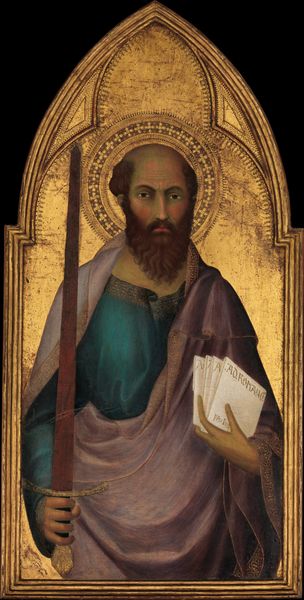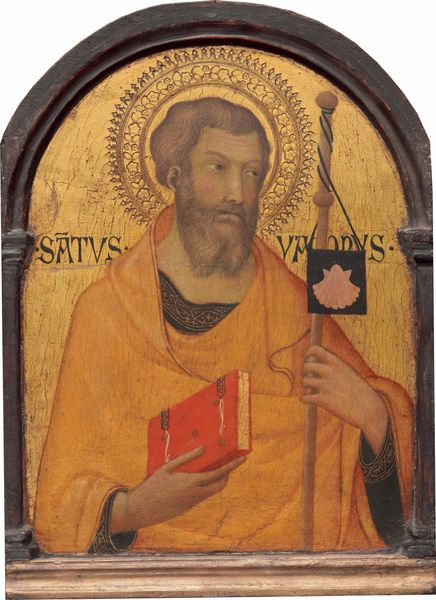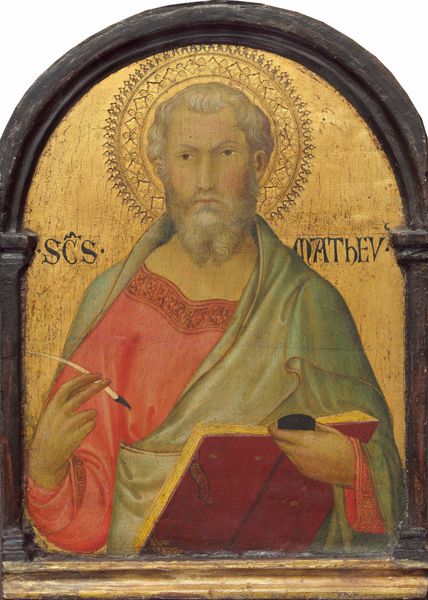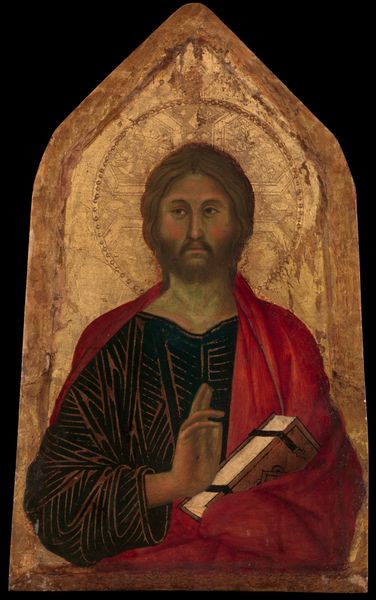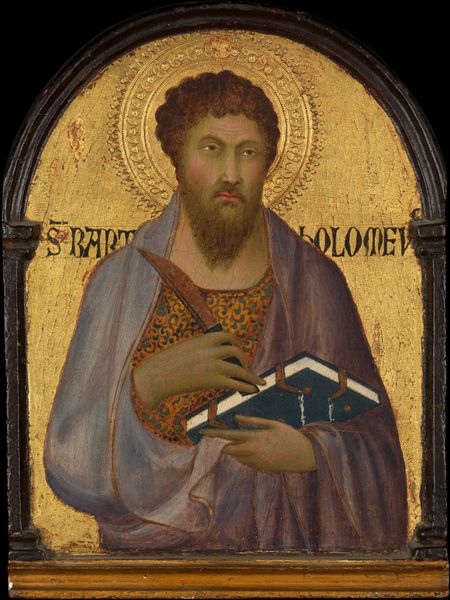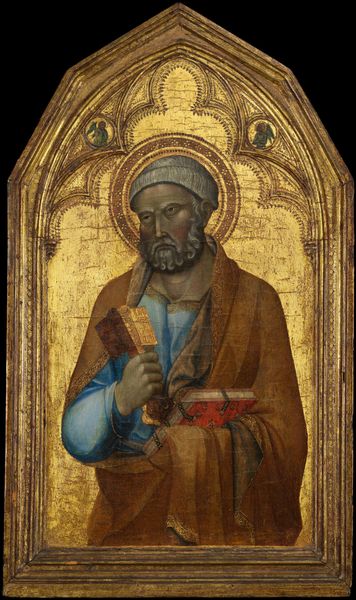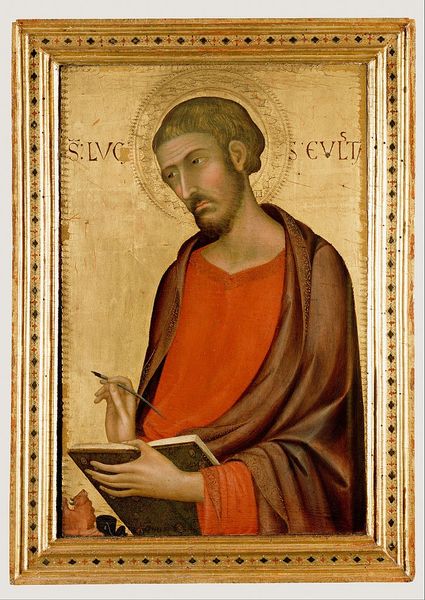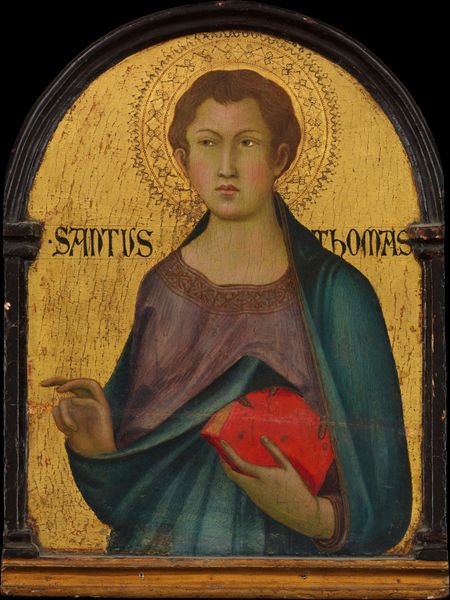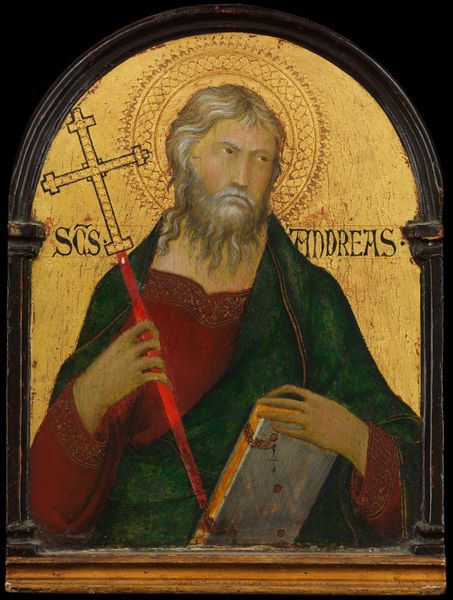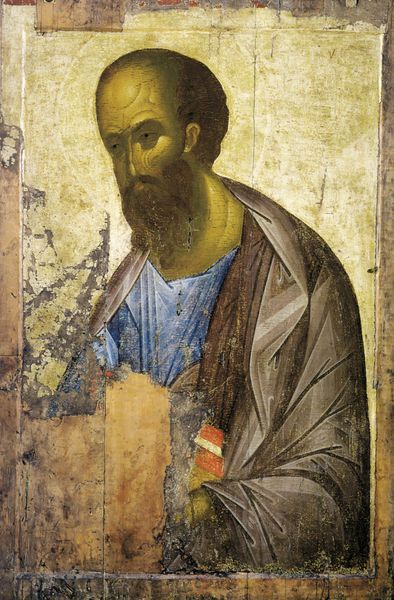
tempera
#
portrait
#
medieval
#
tempera
#
sienese-school
#
italian-renaissance
Dimensions: Overall, with arched top and engaged frame, 11 5/8 x 8 5/8 in. (29.5 x 21.9 cm); painted surface 10 1/4 x 7 3/4 in. (26 x 19.7 cm)
Copyright: Public Domain
Simone Martini’s Saint Matthias was made with tempera and gold leaf on wood, likely around the 1320s. The gold is particularly important. It's not just decoration, but a signifier of value and a testament to the investment made in this object. The gold would have been applied meticulously, leaf by leaf, and burnished to a brilliant shine. Notice how the artist has used punches to create a decorative halo, a mark of the hand. The tempera paint, made with egg yolk, gives the colors a luminous quality, allowing for fine detail in the face and drapery. Consider too the surface quality: the smooth, almost porcelain finish that was highly prized at the time, and achieved through painstaking labor. This was not just art, it was a display of skill and a commitment to the highest standards of craftsmanship. When we look at Saint Matthias, we're seeing more than just a religious figure. We're seeing a convergence of material, labor, and cultural values, one that transcends any boundary between art and craft.
Comments
No comments
Be the first to comment and join the conversation on the ultimate creative platform.
